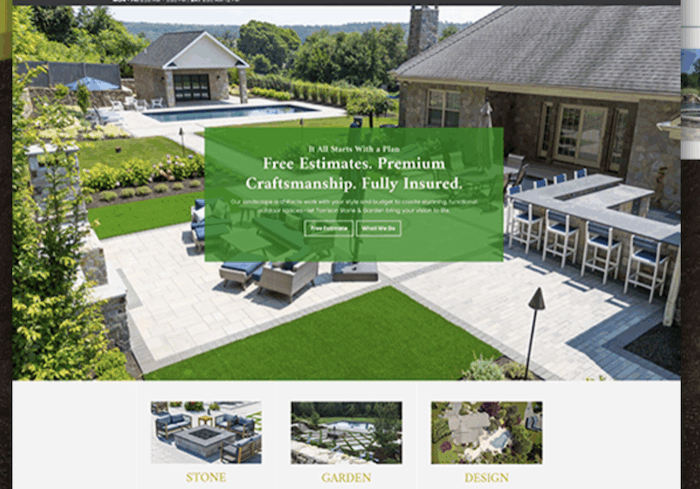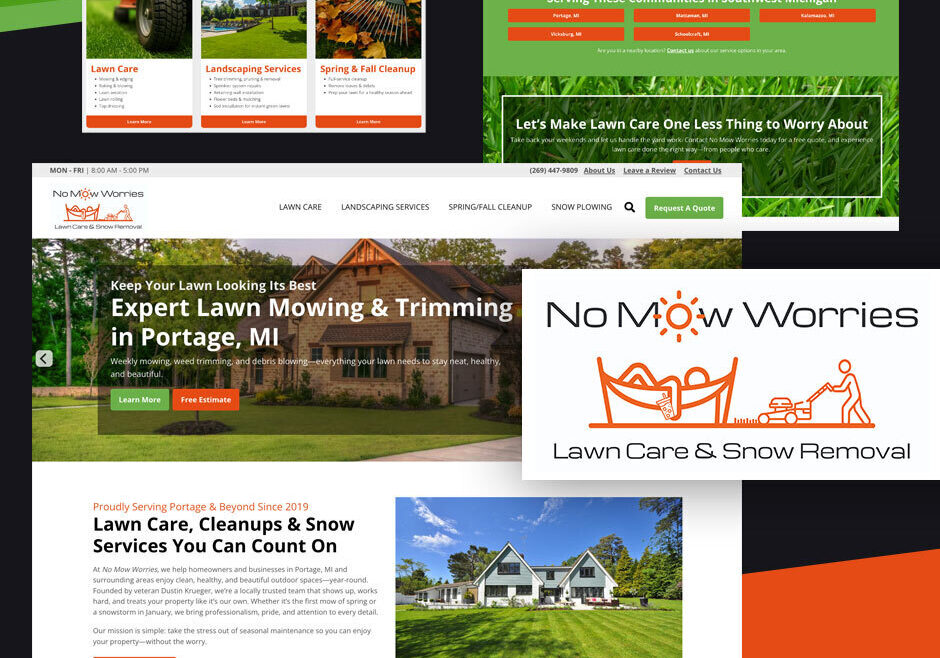Account Management Strategy for Tree and Landscaping Companies

How to build an account management strategy for tree, lawn, and landscape companies
When you’re in business, 99% of the time you’re looking for new clients. But many lawn, tree, and landscape companies who are struggling to expand revenues solely through new client sales are focusing on creating a profitable account management strategy.
An effective account management strategy is essential for any lawn, landscape and tree care company that wants to grow and succeed. At Arborgold Software, for over 25 years we’ve helped companies of all sizes maximize their time and money with technology tools designed to improve their entire business operation so they can thrive and grow.
By following the tips in this article, you can develop a strategy for your tree, lawn, and landscape company that will help you retain customers, grow your business, and improve your bottom line.
1.What’s the difference between Sales and Account Management?
A sales strategy is focused on acquiring new customers, which means getting in front of new prospects through a variety of lead generation tactics with the goal of signing them up to do business with your company.
An account management strategy is focused on retaining and growing existing customers by building strong relationships, upselling them with additional products, services, and support they need to grow with your organization, and encouraging them to refer your business to potential clients.
2. Why is an account management strategy essential for companies in the lawn, landscape, and tree care line of work?
It helps you retain customers. The cost of acquiring a new customer is much higher than the cost of retaining an existing customer. A good account management strategy helps avoid client attrition and improves customer happiness.
It helps you grow your business. Happy customers are more likely to positively review and refer your business to their friends, family, and colleagues. A good account management strategy results in new lead referrals so you can grow your business.
It helps you improve your bottom line. A good account management strategy can help you reduce overall customer acquisition costs, improve revenues, and increase bottom line profits.
3. What elements should be included in an effective account management strategy?
Start off right. A winning account management strategy must include making every customer feel welcomed and appreciated from the moment you start working with them. This helps to establish a relationship of mutual respect and trust that will lead to additional business or referrals in the future.
Set clear goals and objectives. Define what do you want to achieve with your account management strategy. Do you want to increase customer retention? Generate more referrals? Grow your business? Once you know what you want to achieve, you can develop a strategy to help you reach your goals.
Identify your target accounts. Not all customers are created equal. Some customers are more valuable than others. When developing your account management strategy, it’s important to identify your target accounts. These are the customers that are most likely to generate additional revenue, referrals, and profits for your business. We recommend ranking your customers into A, B, and C categories.
- A-level clients probably make up the largest percentage of your sales, but they also can have the most potential to need add-on services (i.e., new business!) for your company. In addition, they might be very willing to refer your company to anyone needing to partner with a lawn, landscape, or tree care business. (More on referrals below!) Give these clients top-of-the-line service and special treatment because they are worth it.
- B-level clients are loyal customers that are responsible for some regular revenue for your company. Although they may not demand a lot of your time and attention, these clients often are great referral sources, and they could ultimately become A-level clients. Have a process to stay in touch with them but don’t over-communicate.
- C-level clients stay fairly quiet and don’t require a lot of contact. They generate some revenue for your business but contribute a low percentage of value overall. When possible, use automated platforms, such as Arborgold’s Marketing Automation, to communicate with them in order to reduce overhead costs.
Understand your customers’ needs. The best way to build a strong relationship with your customers is to understand their needs. What are their pain points? What are their goals? Once you understand your customers’ needs, you can develop a strategy to address them.
Build relationships with your customers. An account management strategy is not about just selling products or services. It’s about building relationships with your residential and corporate clients including businesses, homeowner associations, property management companies, and commercial real estate leasing firms, to name a few. When you take the time to get to know your customers and understand their needs, you can build a strong foundation for a long-term relationship.
Communicate regularly with your customers. Communication is key to any successful relationship. Make sure you communicate regularly with your customers, both in person and through email or phone. Let them know about new products or services, special offers, and any other news that may be of interest to them.
Go above and beyond for your customers, especially your most profitable clients. Don’t just do what’s expected of you. Go above and beyond to exceed your customers’ expectations. This could mean anything from offering a free consultation to providing a same-day service call. When you go the extra mile for your customers, they’ll appreciate it and be more likely to do business with you again in the future, and they’ll sing your praises to others in the community.
Vertical Selling
As a tree, lawn, and landscape company, you may offer a variety of similar services that compliment or are compatible with each other. During account management check-ins with your clients, it’s mission critical to open up discussions and reveal new revenue opportunities. By vertically selling to existing clients, you’re increasing sales without increasing marketing or selling expenses. Learn more about Vertical Selling.
 Referral-Based Selling
Referral-Based Selling
One of the best ways to grow your business is through “referral-based selling.” This is when your existing customers refer their friends, family, and colleagues to your business. Smart businesses don’t wait
around for the stars to align on a random referral by a client. When you integrate a well-planned system for encouraging clients to refer your business, the leads will come pouring in. As a reminder: Arborgold’s integrated CRMsoftware stores an unlimited number of contacts so you can easily stay connected to your customers and prospects.
There are a few things you can do to create opportunities for clients to make referrals about your business:
- Ask for referrals. This may seem obvious, but it’s important to ask your customers for referrals. When you provide excellent service, your customers are more likely to be happy to refer you to their network.
- Offer incentives for referrals. You can offer your customers incentives for referring new business to you. This could be anything from a discount on their next service to a free gift. Be creative!
- Make it easy for customers to refer you. Provide your customers with easy ways to refer you to their network. You can include a referral form on your website or business cards. You can also create a referral program that makes it easy for customers to track their referrals and earn rewards.
- Educate your customers. Don’t be shy about reminding your customers about what you do and the value that you bring. When they have a good experience with your company, they’ll want to share it with others who might be unhappy with their current lawn service provider.
Use technology to keep you organized
Many small to mid-sized companies depend on a variety of free and paid software tools that don’t communicate well with each other. As an example, you may be using
1. QuickBooks to manage your entire customer base information: But QuickBooks isn’t a CRM where you can keep detailed history of each service visit.
2. Free versions or Microsoft Outlook, Gmail, or Yahoo for Contacts and email: By using the free versions of these software programs, your team members are siloed both in the calendar and their contact database. Your employees may be spending more asking questions from co-workers vs. having seamless access to see important job, contact, and invoice details in once place.
3. Estimating, scheduling, job management, and job costing: If you’re using hand written estimates or excel spreadsheets and Google Calendar, you have very limited visibility on your teams’ capacity, your profit margins by service type, and work orders vs. warranty or rework scheduling.
That’s why Arborgold’s all-in-one business management software is trusted by leading lawn, landscape, and tree companies nationwide. You can tour the product online here.
Share this resource
 Referral-Based Selling
Referral-Based Selling



